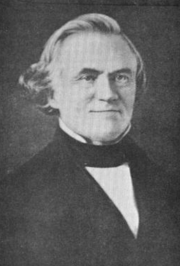
Sing Sing Correctional Facility, formerly Ossining Correctional Facility, is a maximum-security prison operated by the New York State Department of Corrections and Community Supervision in the village of Ossining, New York. It is about 30 miles (48 km) north of New York City on the east bank of the Hudson River. It holds about 1,700 inmates and housed the execution chamber for the State of New York until the abolition of capital punishment in New York in 1977.
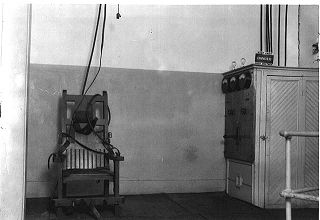
Old Sparky is the nickname of the electric chairs in Arkansas, Connecticut, Florida, Georgia, Illinois, Kentucky, Nebraska, New York, Ohio, Oklahoma, South Carolina, Texas, Virginia, and West Virginia. Old Smokey was the nickname of the electric chairs used in New Jersey, Pennsylvania, and Tennessee. "Old Sparky" is sometimes used to refer to electric chairs in general, and not one of a specific state.
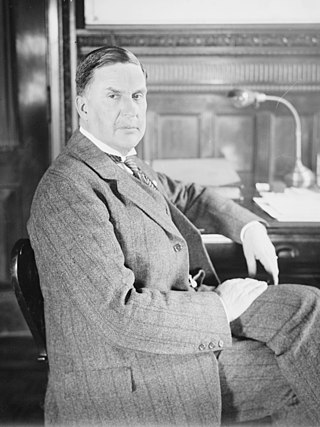
Thomas Mott Osborne was an American prison officer, prison reformer, industrialist and New York State political reformer. In an assessment of Osborne's life, a New York Times book reviewer wrote: "His career as a penologist was short, but in the interval of the few years he served he succeeded in revolutionizing American prison reform, if not always in fact, then in awakening responsibility.... He was made of the spectacular stuff of martyrs, to many people perhaps ridiculous, but to those whose lives his theories most closely touched, inspiring and often godlike."

Lewis Edward Lawes was a prison warden and a proponent of prison reform. During his 21-year tenure at Sing Sing Correctional Facility, he supervised the executions of 303 prisoners.
Elmira Correctional Facility, also known as "The Hill", is a maximum security state prison located in Chemung County, in the City of Elmira in the US state of New York. It is operated by the New York State Department of Corrections and Community Supervision. A supermax prison, Southport Correctional Facility, is located 2 miles (3.2 km) away from Elmira.
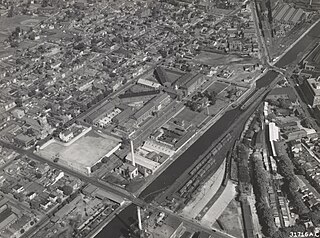
The New Jersey State Prison (NJSP), formerly known as Trenton State Prison, is a state men's prison in Trenton, New Jersey operated by the New Jersey Department of Corrections. It is the oldest prison in New Jersey and one of the oldest correctional facilities in the United States. It is the state's only completely maximum security institution, housing the most difficult and/or dangerous male offenders in the inmate population. NJSP operates two security units and provides a high level of custodial supervision and control. Professional treatment services, such as education and social work, are a priority at the facility. The Bureau of State Use Industries operated the bedding and clothing shops that were once located in Shop Hall at the facility. These industries have been relocated to South Woods State Prison.

William C. Holman Correctional Facility is an Alabama Department of Corrections prison located in Atmore, Alabama. The facility is along Alabama State Highway 21, 9 miles (14 km) north of Atmore in southern Alabama.

The Cummins Unit is an Arkansas Department of Corrections prison in unincorporated Lincoln County, Arkansas, United States, in the Arkansas Delta region. It is located along U.S. Route 65, near Grady, Gould, and Varner, 28 miles (45 km) south of Pine Bluff, and 60 miles (97 km) southeast of Little Rock.
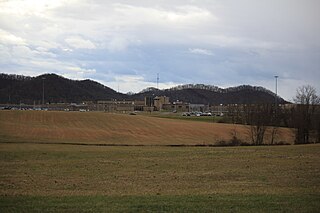
The Southern Ohio Correctional Facility is a maximum security prison located just outside Lucasville in Scioto County, Ohio. The prison was constructed in 1972. As of 2022, the warden is Donald Redwood.
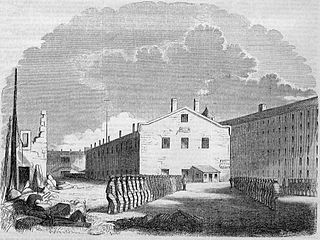
The Auburn system is a penal method of the 19th century in which persons worked during the day in groups and were kept in solitary confinement at night, with enforced silence at all times. The silent system evolved during the 1820s at Auburn Prison in Auburn, New York, as an alternative to and modification of the Pennsylvania system of solitary confinement, which it gradually replaced in the United States. Whigs favored this system because it promised to rehabilitate criminals by teaching them personal discipline and respect for work, property, and other people.

The Massachusetts Correctional Institution at Concord (MCI-Concord) is a medium security prison for men located in Concord, Massachusetts in the United States. Opened in 1878, it is the oldest running state prison for men in Massachusetts. This prison is under the jurisdiction of the Massachusetts Department of Correction. The facility has a total capacity of 614 general population beds, but with a long-term decline in the number of men incarcerated for the entire state, the population as of 2023 had decreased to about 300 and Governor Maura Healey announced a plan to close the prison in the summer of 2024 and transfer the remaining prisoners to other facilities.
The Pendleton Correctional Facility, formerly known as the Indiana Reformatory, is a state prison located in Fall Creek Township, Madison County, near Pendleton and about 25 miles (40 km) northeast of Indianapolis. Established in 1923, it was built to replace the Indiana State Reformatory located in Jeffersonville after a fire severely damaged the original property. The Pendleton facility currently offers maximum and minimum-security housing for adult males over 22 years old. The maximum-security portion is made up of 31 acres (130,000 m2) surrounded by a concrete wall. It has an average daily population of approximately 1,650 inmates. Located on the grounds outside the enclosure, the minimum-security dormitory holds approximately 200 prisoners on a daily basis.

The Indiana Women's Prison was established in 1873 as the first adult female correctional facility in the country. The original location of the prison was one mile (1.6 km) east of downtown Indianapolis. It has since moved to 2596 Girls School Road, former location of the Indianapolis Juvenile Correctional Facility. As of 2005, it had an average daily population of 420 inmates, most of whom are members of special-needs populations, such as geriatric, mentally ill, pregnant, and juveniles sentenced as adults. By the end of 2015, the population increased to 599 inmates. Security levels range from medium to maximum. The prison holds Indiana's only death row for women; however, it currently has no death row inmates. The one woman under an Indiana death sentence, Debra Denise Brown, had her sentence commuted to 140 years imprisonment in 2018 and is being held in Ohio.

Kentucky State Reformatory (KSR) is a medium-security prison for adult males. The prison is located in unincorporated Oldham County, Kentucky, near La Grange, and about 30 miles (48 km) northeast of Louisville. It opened in 1940 to replace the Kentucky State Penitentiary in Frankfort after a flood damaged the original property. The current (2020) capacity of KSR is 1053 inmates.
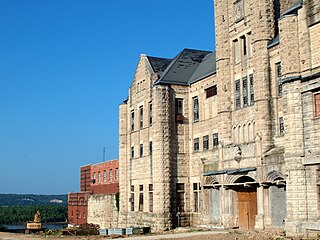
The Missouri State Penitentiary was a prison in Jefferson City, Missouri, that operated from 1836 to 2004. Part of the Missouri Department of Corrections, it served as the state of Missouri's primary maximum security institution. Before it closed, it was the oldest operating penal facility west of the Mississippi River. It was replaced by the Jefferson City Correctional Center, which opened on September 15, 2004.
The Wardens of Sing Sing are appointed by the Commissioner of the Department of Corrections and Community Supervision.

Captain Elam Lynds (1784–1855) was a prison warden. He helped create the Auburn system, which consisted of congregate labor during the day and isolation at night, starting in 1821 and was Warden of Sing Sing from 1825 to 1830.

North Carolina Correctional Institution for Women (NCCIW) is the primary North Carolina Department of Public Safety prison facility housing female inmates on a 30-acre (12 ha) campus in Raleigh, North Carolina, and serves as a support facility for the six other women's prisons throughout the state. The facility's inmate population, which is the largest in the state, consists of inmates from all custody levels and control statuses including death row, maximum security, close custody, medium security, minimum security, and safekeepers.
Wethersfield State Prison was the second state prison in the state of Connecticut. Used between 1827 and 1963, it was later demolished and the site turned into a park on the banks of the Connecticut River.
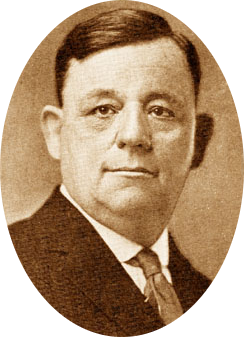
Frank Lamar Christian, M.D., was the warden of Elmira Correctional Facility from 1917 to 1939.



